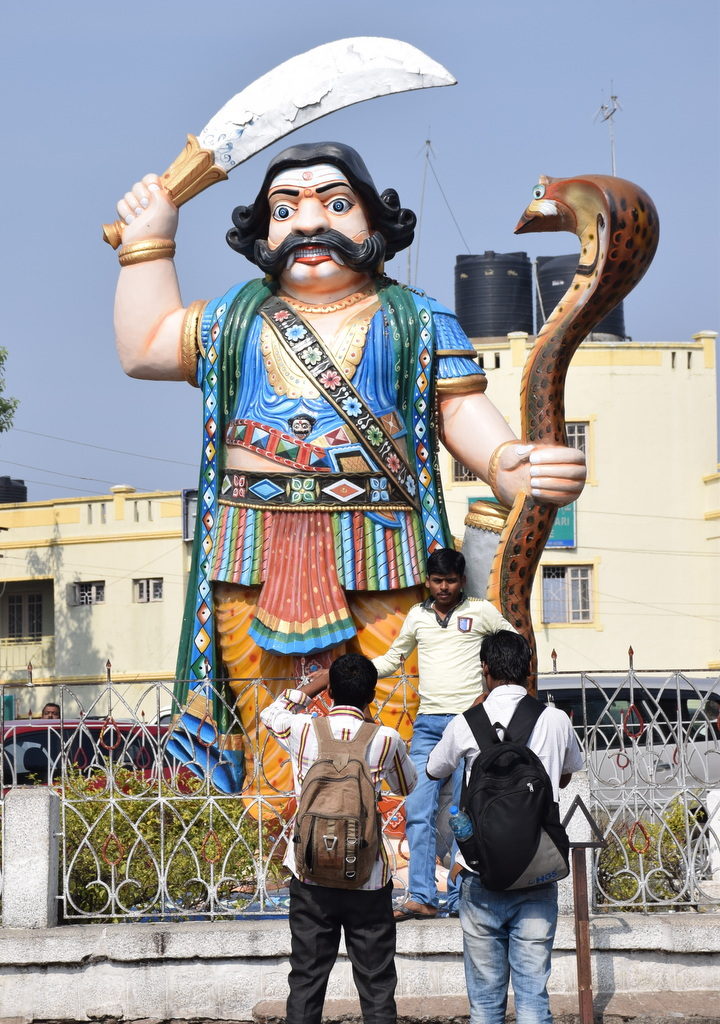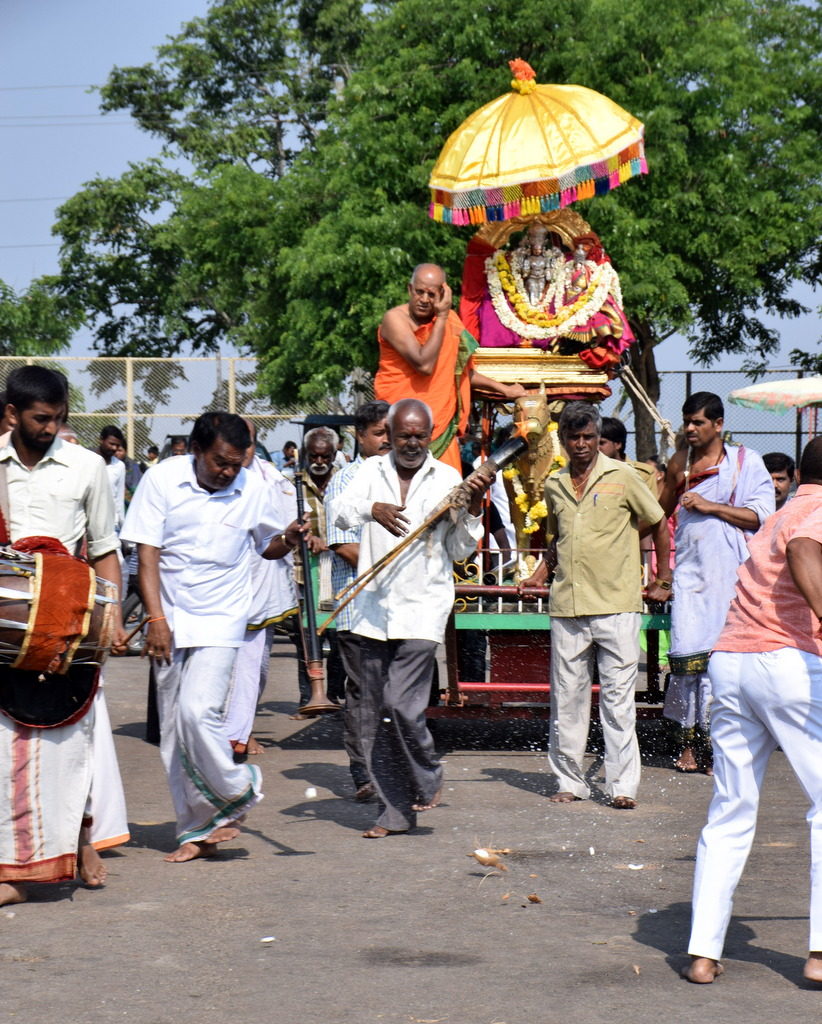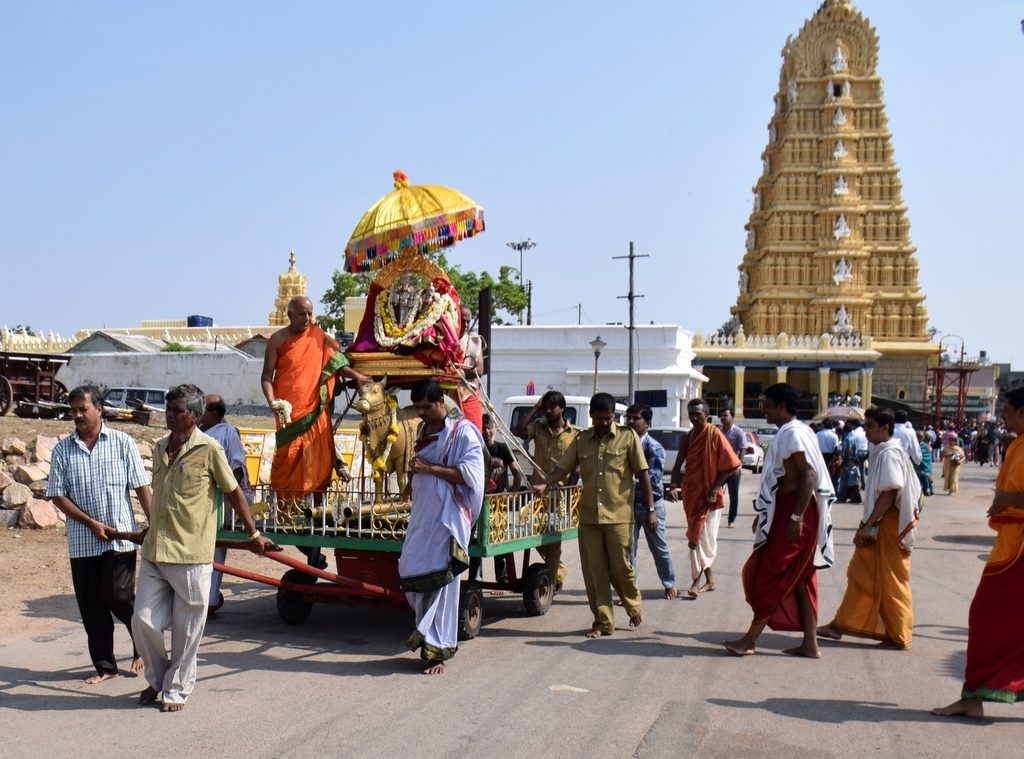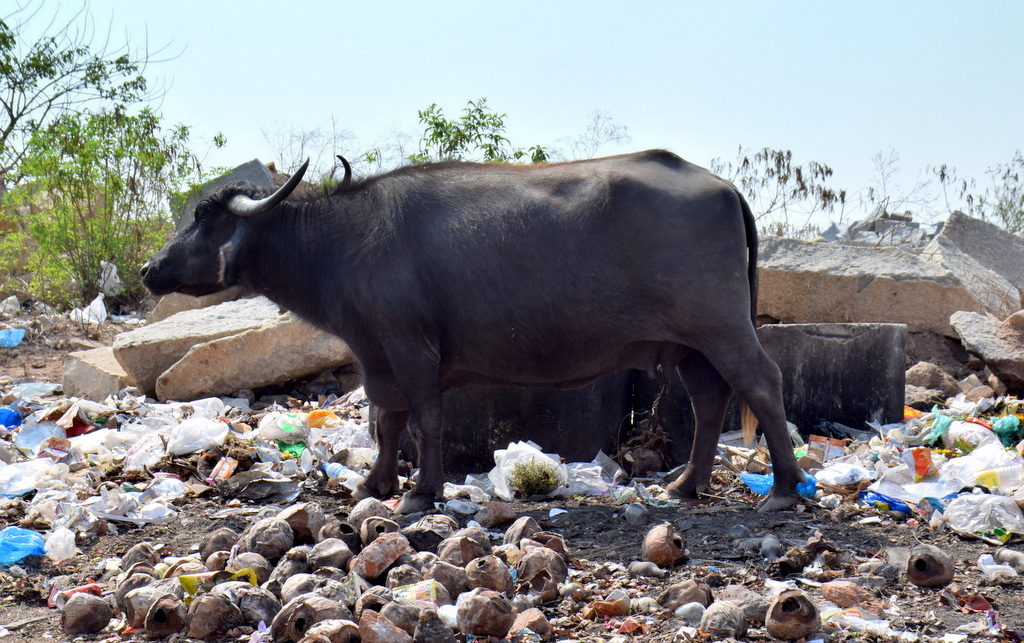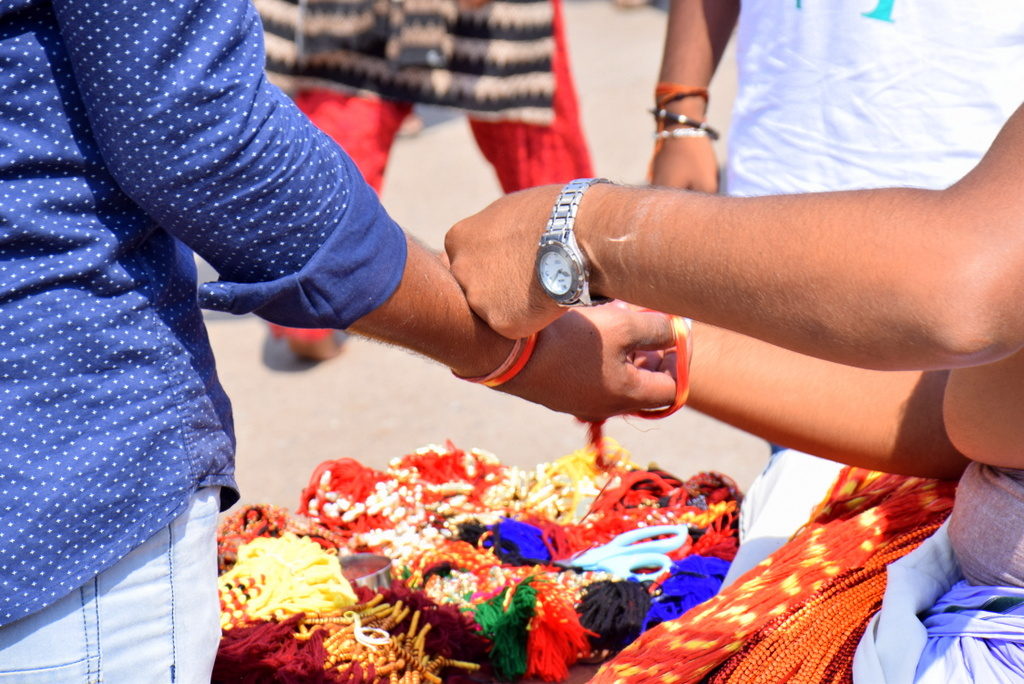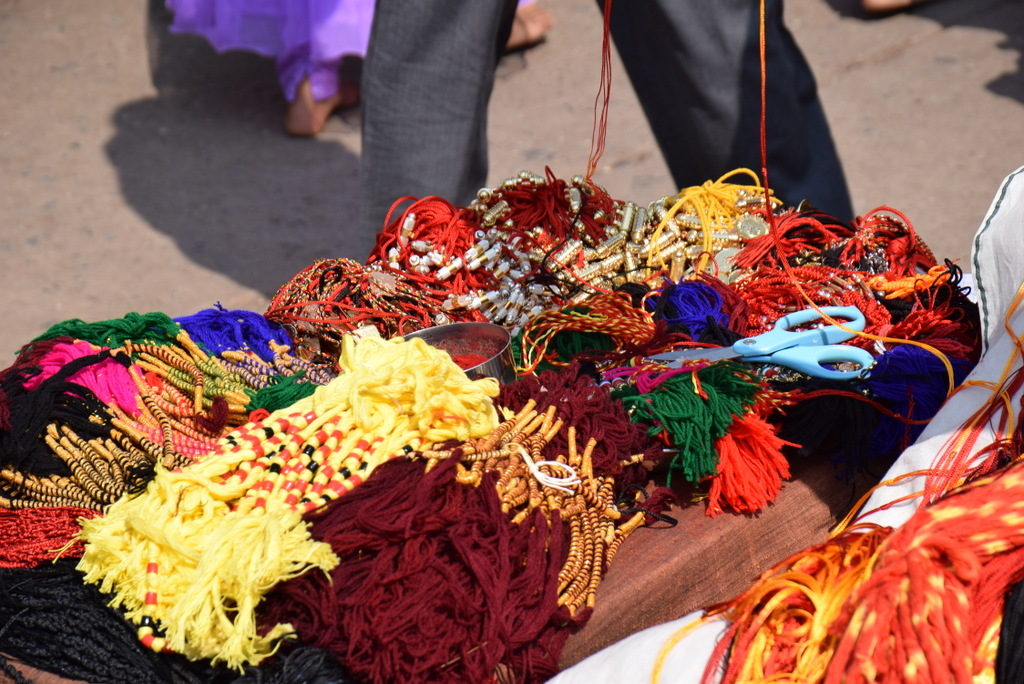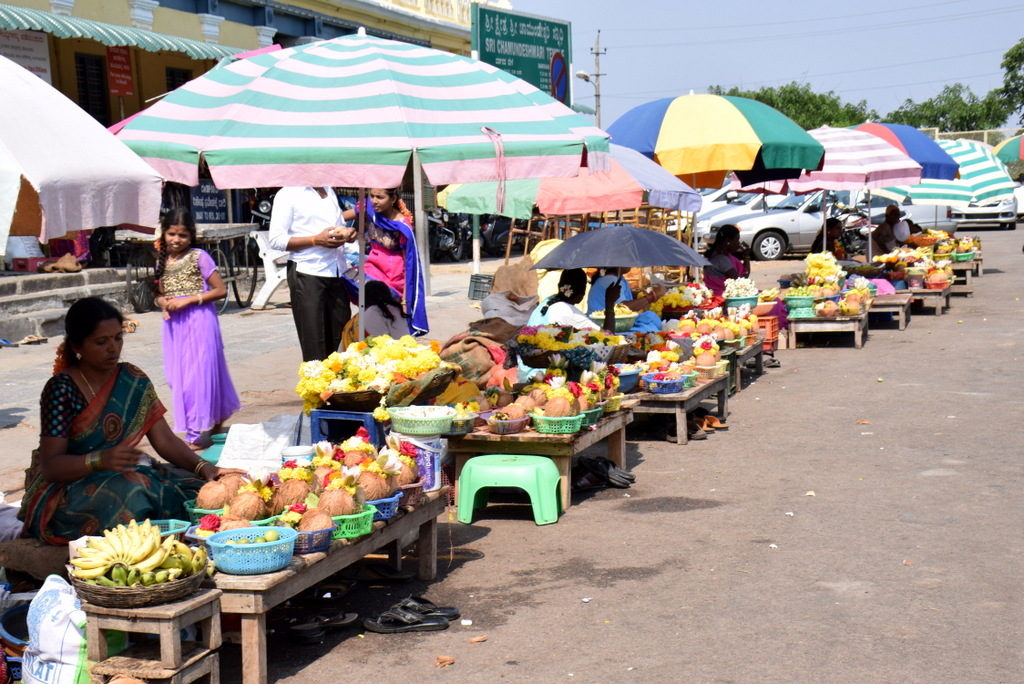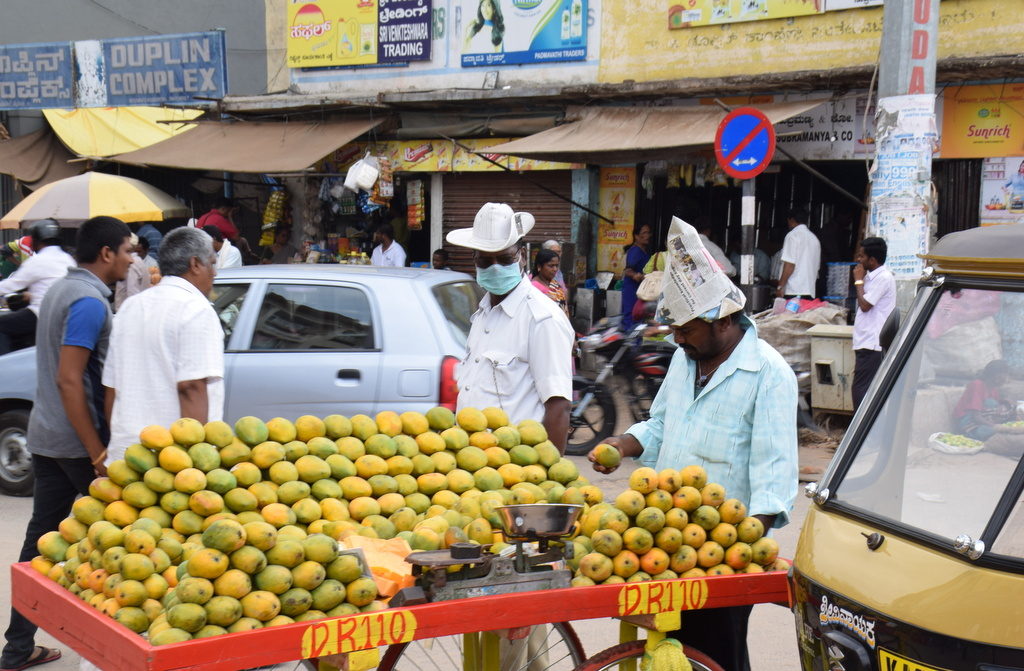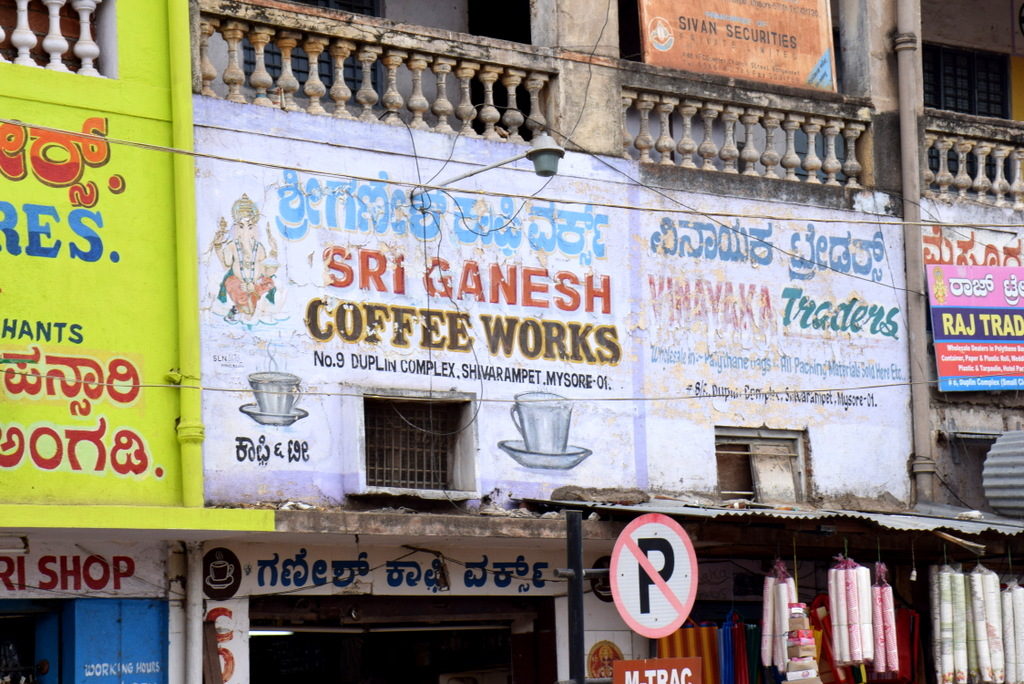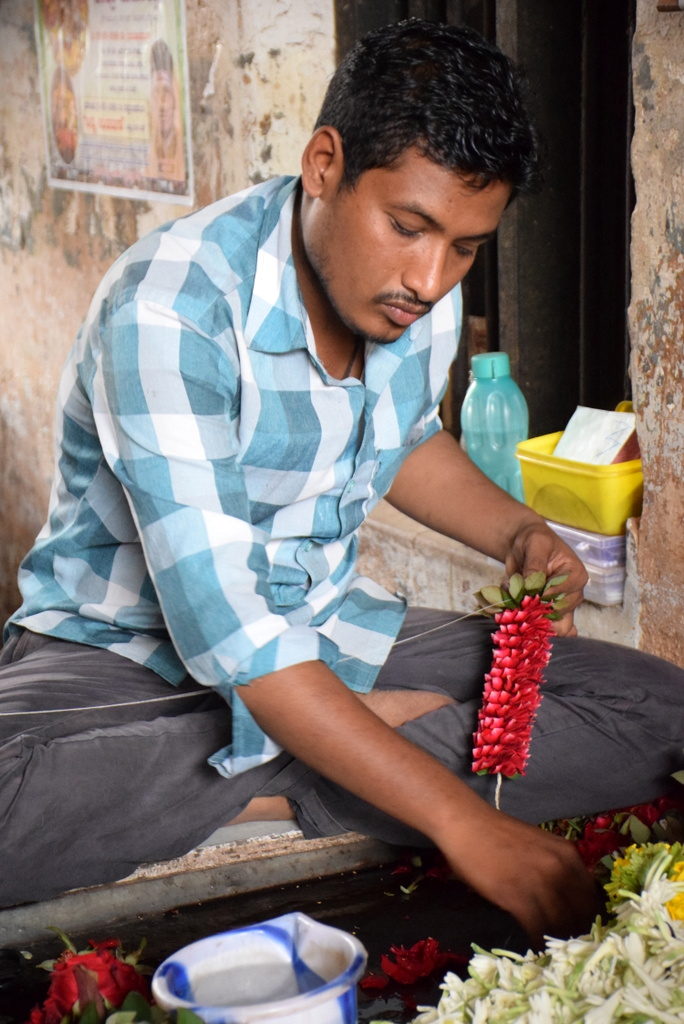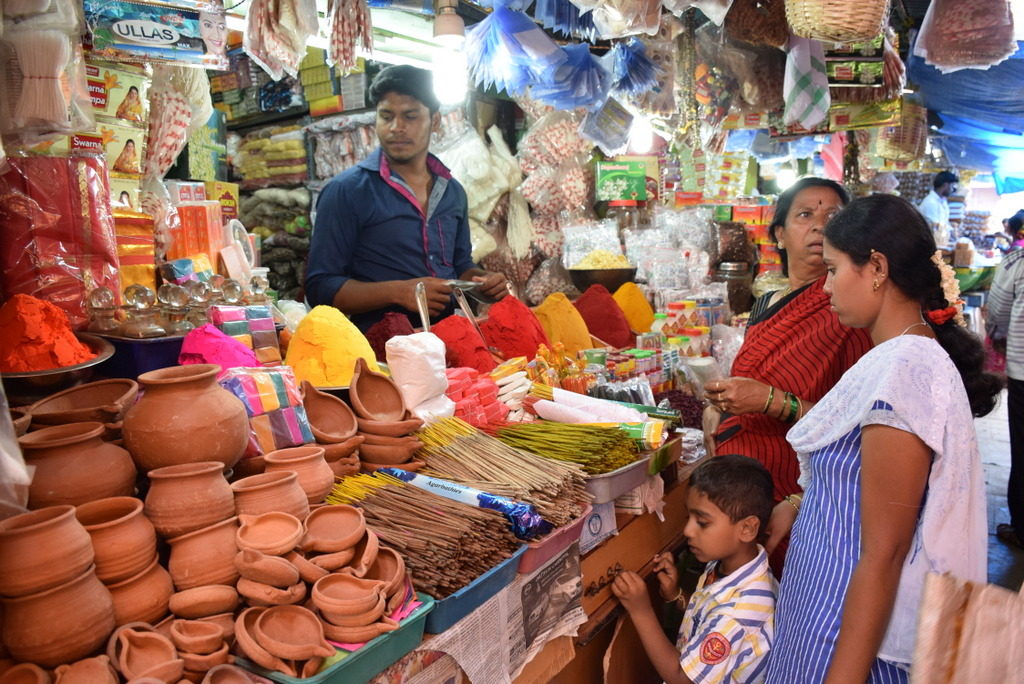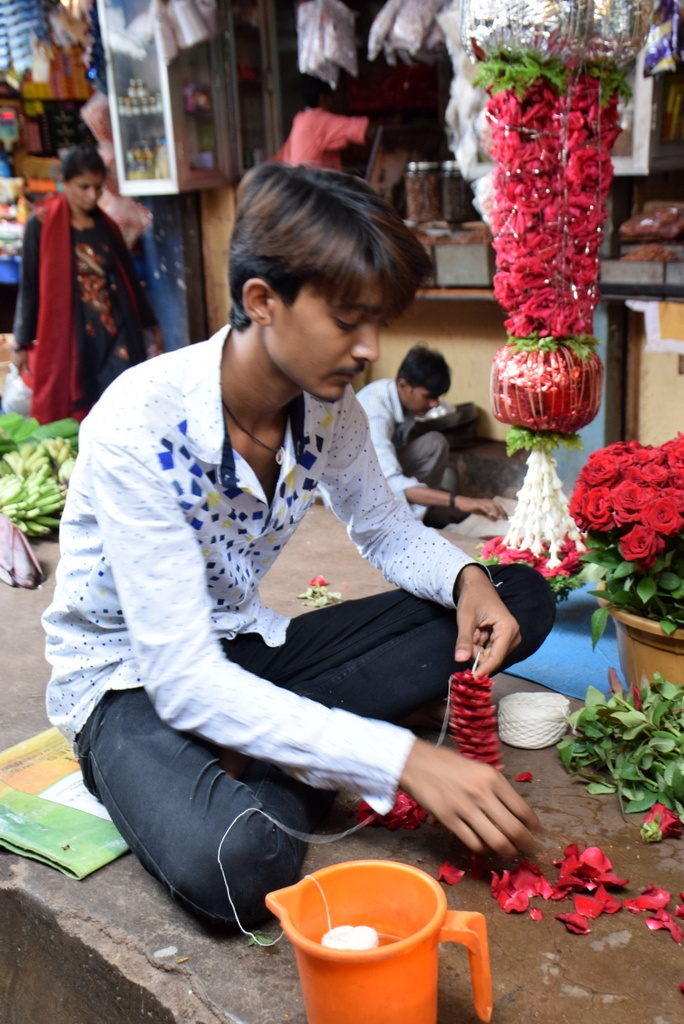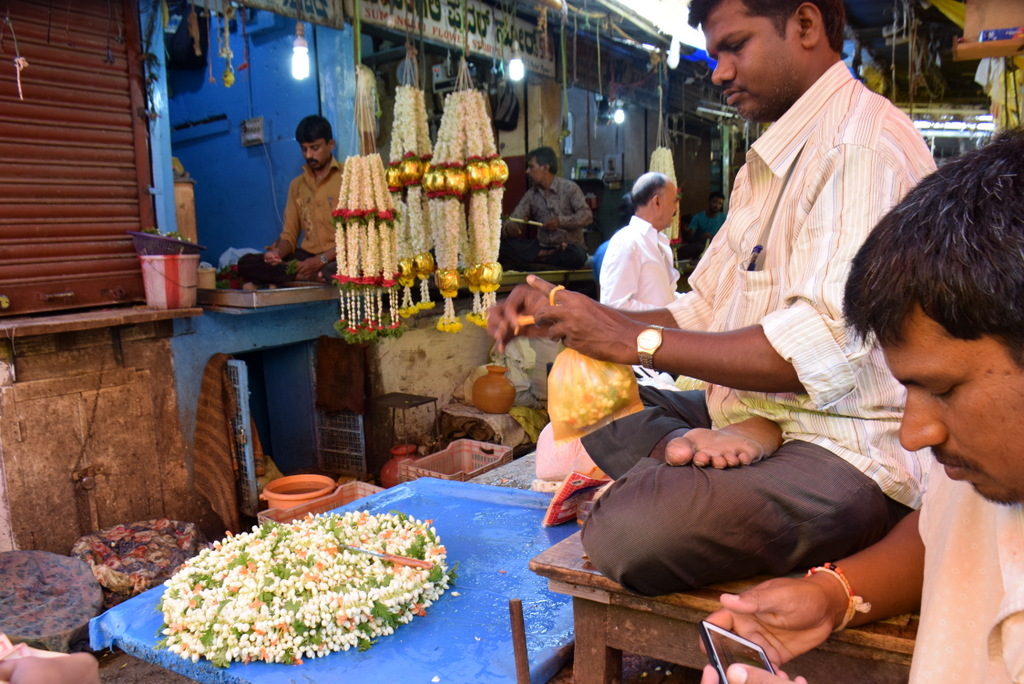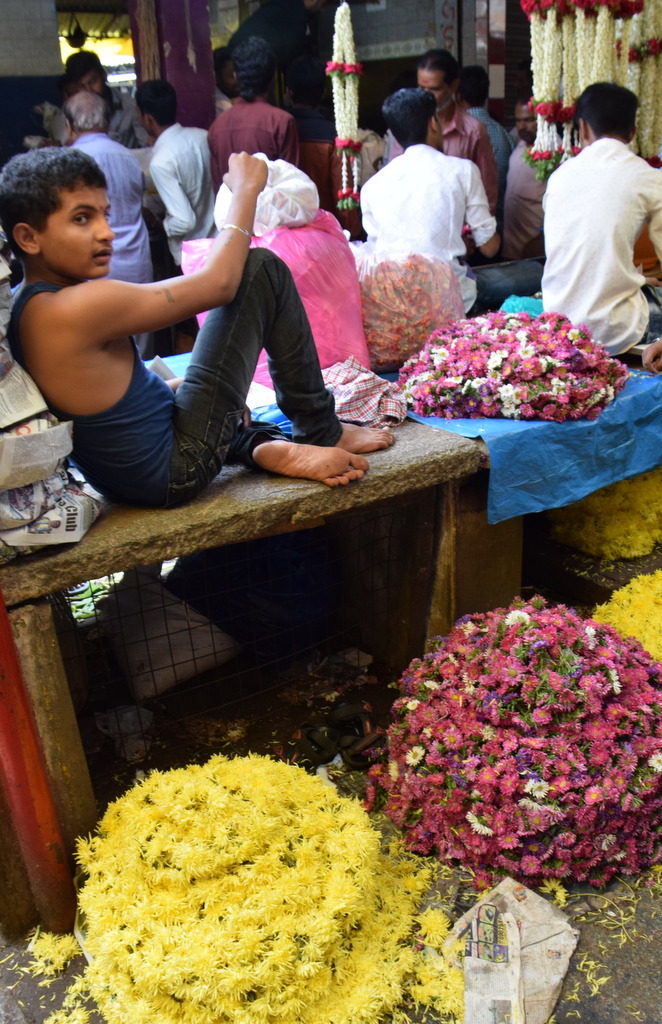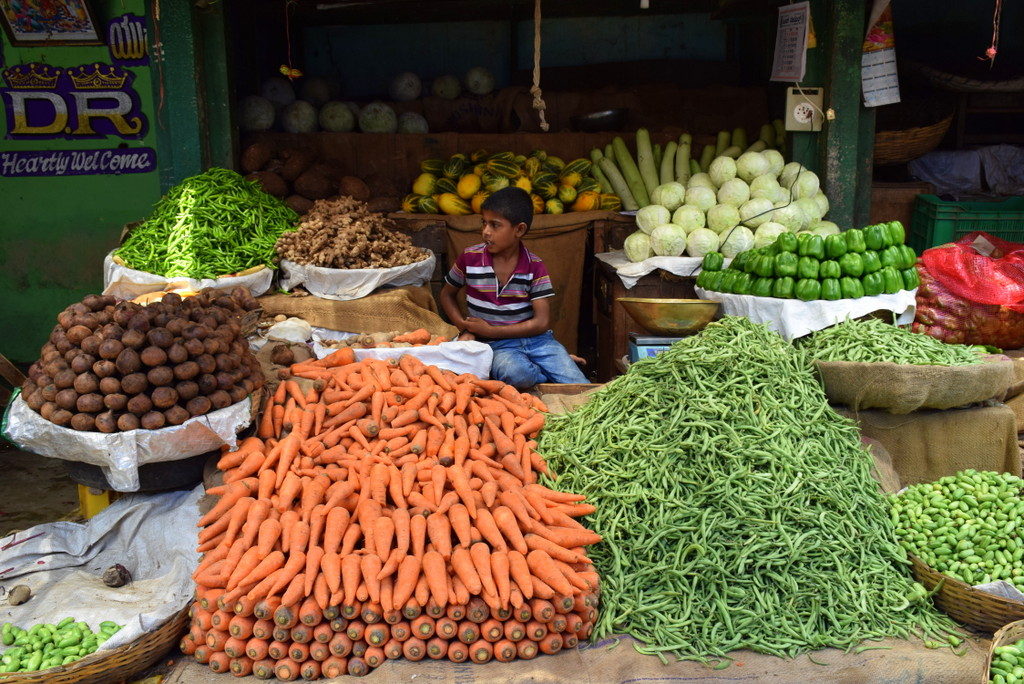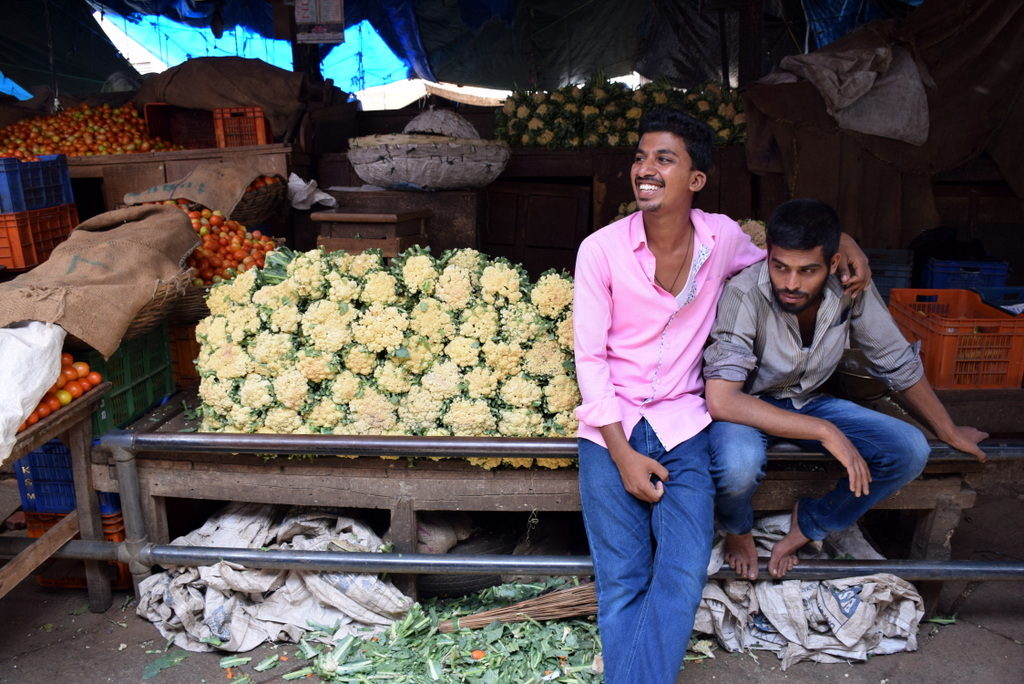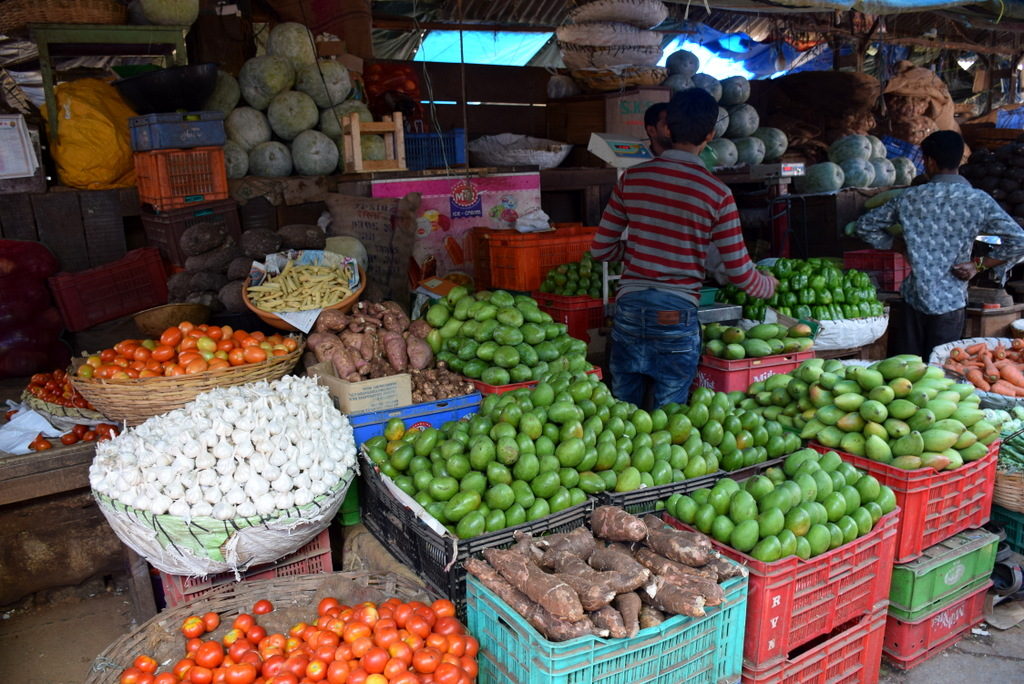Up and ready to go by 9:00 am, met our guide for Mysore – Ragu.
Our first stop was The Chamundeshwari Temple is located on the top of Chamundi Hills. We visited on a Friday which is the busiest day as many people go to the temple to worship as this is Adi Parashakti’s day. The Temple was crowded with thousands of people making their way to the top and waiting on line for 3 hours or more to get inside the temple for 2 or 3 minutes to make an offering and pray. The atmosphere was really lively and some people were throwing coconuts to the ground smashing them in hopes of keeping evil spirts away. There is an abundance of flowers, particularly marigolds, which are bought from the street vendors and then offered to the god.
We made our way down the hill to the Nandi Bull (Lord Shiva’s vehicle) which is a huge granite sculpture, it is over 15 feet tall and 24 feet long and powerfully impressive! Many worshippers stop here on their way to the Chamundeshwari Temple.
We proceeded onto the Mysore Palace It is the official residence and seat of the Wodeyars — the Maharajas of Mysore, the royal family of Mysore, who ruled the princely state from 1399 to 1950. We could only take pictures from the outside of this impressive Royal building. John could not go in because no shoes are allowed, I went in with Ragu. Ok, so think Brighton Pavillion, Liberace, Murano glass, Belgian Crystal, Italian ceramics and Parisian Art Nouveau – add gold leaf and excessive color, and somehow it all comes together and is amazing! All the ironwork is from Glasgow. The architectural style of the palace is commonly described as Indo-Saracenic, and blends together Hindu, Muslim, Rajput, and Gothic styles of architecture. It is a three-storied stone structure, with marble domes and a 145 ft five-storied tower. The palace is surrounded by a large garden.
The three storied stone building of fine gray granite with deep pink marble domes was designed by Henry Irwin.
After the palace we had a chance to wander around the local market which includes a massive flower section where the floral offerings are made. Again it is mostly men who produce these and are incredibly quick at stringing the flowers together. There are also areas in the market for fruits and vegetables, spice, incense and colored powders for every Hindu holiday and festival as well as the normal market fair.
- Mahishasura – the devil that fought with Chamundi
- Chamundeshwari Temple
- Touching the cow, a holy animal, for good fortune
- The procession of the Shrine
- Throwing coconuts for good luck
- Makeshift altar for those who can’t wait in line
- View of Mysore
- Bull Temple
- Carving Sandsone
- Clock Tower in town center
- Mysore Palace
- Mysore Palace
- Mysore Palace
- Mysore Palace
- Mysore Palace
